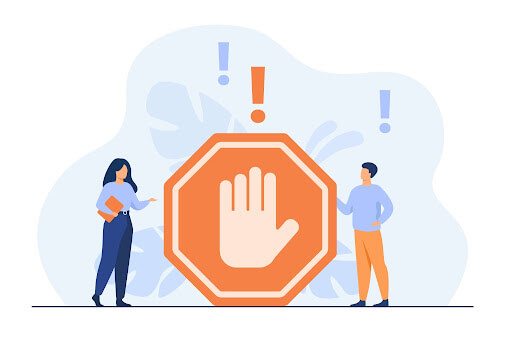Disclaimer: Google’s disavow tool is an advanced SEO technique and must be used with caution, please read the below article before attempting to use this tool.
While lots of digital marketers’ including ourselves will always talk about gaining links to boost SEO, sometimes removing a bad link is just as important. Just as a good link is beneficial and a bad link can be damaging to your SEO. For example, a very low-quality site that is unrelated to your business may have a negative effect on your DA and PA as well as your overall SEO. So, how do you go about ‘removing’ this bad link?
Link penalties are very real, many firms believe them to be outdated. Although not as heavily punished as they once were, bad links still incur penalties and you must constantly review your links to make sure they are all high quality and desirable.
Our suggested way to go about link review and removal is using the Disavow tool. Although it is often forgotten, removing poor quality links is just as important as making new ones. This blog will tell you how to use google’s disavow tool
When should I use disavow?
Google’s disavow tool is a way for you to tell google that you do not want their crawlers to consider certain links on your site.
The main reason you should disavow a link is that the site is full of spam or low quality. It is all too common that when a business comes to us asking why their SEO is not working as it should that we find they have paid for a whole host of low-quality sites to link their website, actually damaging their SEO!
Although typically these sites are purely set up for the addition of links, many people will spam a comments section somewhere with links to a site in the hopes that this will do the trick. Another common issue is when the linked site is from a non-target country.
The exception to this rule
This advice does come with a caveat. Lots of time and effort goes into building site links and this tool must be used with extreme caution. The only time this tool should be used is when a site link is definitely spammy or harmful.
So here’s the million-dollar question: What doesn’t count as a “normal” or “typical” site?
In other words, when would you need to disavow a link if Google does most of the work?
There’s also been a lot of talk about Google’s new algorithm rendering link penalties useless. However, this simply isn’t true. There are no longer manual penalties given out by employees at Google, however, google’s penguin algorithm is still punishing for poor quality links.
There are several steps we advise taking before using the disavow tool. It’s a serious action telling Google that this link threatens your site. The first step is to request the removal of a link, we suggest emailing the owner of the site and asking for them to remove the link. If you are having difficulty finding a contact for the owner of the site get in touch with us and we will help you find them.
If you fail to make contact or they refuse to remove the site link you can then disavow using google’s disavow tool. It’s not the end of the world if you have to use disavow but it is better if you can have it removed manually by the owner.
What should I disavow?
Whether you have 1,10 or 1000 backlinks to your site, the natural thing to think is that they are all helping your SEO. But, the chances are there are at least a few undesirable links within the mix. However, it is easier said than done when it comes to finding them. First, go to google’s webmasters interface then click ‘search traffic’ on the sidebar, next click ‘links to your site’. Then you want to go to the ‘who links the most and choose the ‘more’ option, then “download more sample links ‘. These steps will generate a list of all pages that link to your site.
Now for the hard part…
You will need to slowly comb through these as google does not separate them based on good bad or otherwise. If you have lots of links you may wish to use a link ranking tool. We can provide you with a list of suggested providers should this be something you want. If you don’t have a lot of links, it is certainly worthwhile to manually browse each link. However, you must have anti-virus software installed to help protect yourself against potentially damaging links. Also, before clicking on any of the links take a look and see whether the link name looks reasonable and click nothing that gives you bad vibes.
Let’s use Rodexo.ie as our example, we are a digital marketing and web design firm based in Ireland and operate primarily in Europe. If we saw any of the following links it would be a cause for concern.
(www.funnycatvideos.com)
There is very little chance this site is within our niche. For that reason, we would consider disavowing.
(joans.scones.xyz)
In general, it is important that you are distrusting of any links with .ru,.ch,.xyz,.click or any other strange-looking TLD. The likes of .xyz and .click are often spam sites, and .ru and .ch have bad reputations. Most firms will predominantly desire links with the same TLD as their site. For example, an Irish site would be looking for .ie, .com, and .uk predominantly, followed by other potentially related European or US countries TLD’s.
Once you have selected all the links for Disavowing. Create a list using .txt and continue to the following section.
Using Google Disavow
I’m sure you will be glad to hear that this is the easiest step. Go to google’s disavow tool and click disavow links. Google then warns you as to the dangers of carrying out this action. ‘Now choose file’ and select your .txt. You will then be warned again, click ‘submit
And that’s all, google will do the rest. It can take up to a week to be affected.
If you need any help please contact us and we can help clarify anything you need,(Contact us)





